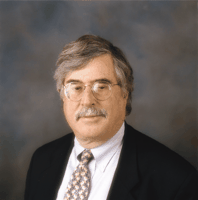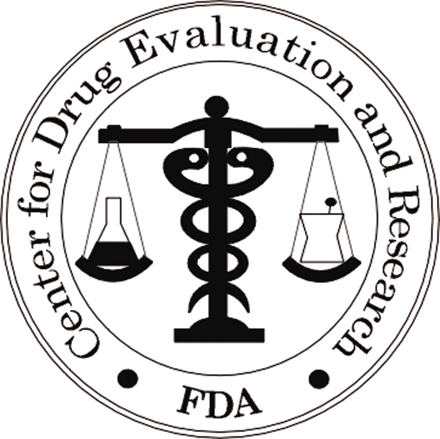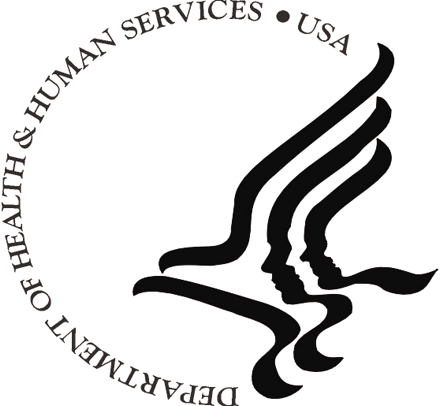ROBERT TEMPLE: An eye for data

Robert Temple has spent more than thirty years of his career at the Food and Drug Administration—and he still likes it! After medical school, internship, and residency, Temple pursued endocrinology research at the NIH before deciding, in the early 70s, to apply his interests in science to consumer advocacy at the FDA. The FDA was undergoing enormous changes at that time, and Temple enjoyed the challenges associated with improving drug development and patient safety. Always relying on a critical evaluation of data, he is comfortable discussing mechanisms of drug action, experimental design, and regulatory policies, as well as the social implications of direct-to-consumer advertising of drugs. Currently, Temple is Director of one of the six Offices of Drug Evaluation and also serves as the Associate Director for Medical Policy.

MI: How would you describe the work you do here at the FDA?
RT: Well, I have a few jobs. Let me first talk about the evaluation of drugs. In evaluating an application to market a drug, we have to decide whether the evidence of effectiveness given meets both legal and scientifically appropriate tests. Beyond that determination, we examine the safety of the drug by weighing the good that it does against the problems that it poses—both the ones that we have identified and some that might be theoretical. That is a benefit/risk determination. We really have to pay very close attention, in the course of doing this, to the details of the studies we review—we have to break them down and look at them in ways that journal reviewers can only dream about.
MI: You’re talking here about the role of the FDA as peer reviewers?
RT: Yes. Not all regulatory agencies work that way to the extent that we do, but they are moving that way. We receive all of the data that support a New Drug Application (NDA) right down to data that support a New Drug Application (NDA) the listings of every data point. We review all aspects of the study protocol, and we know about all changes made to the protocol over time. We have details on how blinding was maintained, if that’s an issue. In some ways, review of the studies is the easier part of the job, the “reactive” part—you look at something someone shows you and you verify the conclusions. But the harder part is to assess what should have been done or thought about that wasn’t done, or thought about—we have to consider what might be missing—which you might call the more “creative” part of the job, and the part that requires experience.
MI: And how do the people who are submitting applications respond to your suggestions about drug development, study design, etc.?
RT: They’re generally grateful. Companies come in all the time to the FDA to show their development plans and to ask what we think of them. They want to know what we expect. We have well over 1000 meetings per year at the FDA in which we devote ourselves to talking to companies about their plans for developing a new drug. Sometimes we can help them right on the spot, sometimes we get outside consultants, and sometimes we write guidance documents—usually with input from our advisory committees that tell us what they think we need to know about a new drug for arthritis, or for depression, for example. There are all sorts of questions that may come up: What are the right measurements of depression that should be used in planned drug trials? Is it enough, in attempting to treat Alzheimer’s disease, to show that cognition is improved, or do you have to show that the activities of daily living or some other more “global” measure of the patient’s status is improved? How to evaluate safety is always critical. Should certain kinds of adverse effects be grouped because they really represent the same thing, or are we really considering a diversity of reactions? Any safety analysis must use a standard “dictionary” to translate and capture investigated descriptions related to a commonality of adverse events under a common term. But this can lose information, too. Recently, for example, we found that in pediatric depression studies, suicidal behavior or thoughts were called “emotional lability,” which subsumed many important events. So, when we look at the safety data, we’re always trying to make sure that all appropriate analyses have been done.
MI: This all happens in your role as Associate Director for Medical Policy, right?
RT: No. Right now I’ve been talking about my work as Director of the Office of Drug Evaluation 1 (ODE1). You see, there are six offices of drug evaluation, so that all drugs are distributed into those six groups. Each office has three divisions, so for example, ODE1 oversees Cardio-Renal Drugs, Neuropharmacological Drugs, and Oncology Drugs. The six Offices of Drug Evaluation and their Divisions are responsible for monitoring drug development and deciding on whether marketing applications will be approved. One of their principal tasks is to monitor the investigation of new drugs, that is, the studies companies and other sponsors do in order to develop the evidence to show that their new drug ought to be marketed. These are the so-called “INDs.”
MI: IND stands for Investigational New Drug Application, right?
RT: Well, IND formally stands for Notice of Claimed Investigational Exemption for a New Drug. The law says that you may not ship a drug in interstate commerce unless it’s approved—unless it’s got an approved New Drug Application. So, the IND is an exemption to that law: You’re allowed to ship it in interstate commerce in order to study it. But most people think IND stands for Investigational New Drug Application, and that’s fine. Strictly speaking, though, they’re not really “applications,” and we don’t approve them. Rather, if there’s no problem, we don’t object to their going forward!
MI: Well, what happens when an IND is filed and the FDA does not object?
RT: We give a lot of advice along the way—we are responsible for making as sure as possible that clinical studies will be safe to conduct. In order to bring a drug into humans, you have to do some animal studies first, and certain in vitro work—an Ames test, for example—you usually conduct tests for genotoxicity, and you carry out enough chemistry to be reasonably sure you know what you’re giving. All those studies precede the human studies and this process continues—e.g., you conduct longer animal studies before you do longer human studies. You go through the small studies (i.e., Phase 1) to see if people can take reasonable doses without getting sick, and what the pharmacokinetics are. And then you do some targeted studies (i.e., Phase 2) to see if the drug really does, for example, lower the blood pressure, and get early data on dose-response. Then you do larger studies (i.e., Phase 3) to get more information from a broad population, look at longer durations, study more doses, to get more controlled safety data. And at the end of all that, you have enough evidence to say, “Yes, the drug works, and here’s how to use it; here’s how to titrate it, and here’s how to dose it,” and after studying it in a few thousand people, we know what the side effects are. So, then we can write a package insert, or label, telling people how to use it. And when all that’s done, the company submits a New Drug Application (NDA), i.e., a marketing application, which is reviewed by the same Divisions of the FDA that oversaw the INDs. A lot of thought goes into this whole process, some of which is not always straightforward, because it would be a waste of everybody’s time and of the exposure of patients to the drug if the wrong studies were performed. So, we try to be very clear with companies along the way about our expectations and give the best advice we can. We’ve been doing more and more of this, really since the 70s.
MI: Why do you say that this type of collaboration has been going on “since the 70s”? The FDA had been founded decades before that.
RT: Well, it’s interesting. Into the 60s, there was a view here at the FDA that if you helped a company design their study, you wouldn’t be able to review it properly—that you’d be co-opted in some way. And there were people at the FDA who actually let studies go forward that they knew would not satisfy them when it came time to see the marketing application. Well, in the 70s, we saw that the cost of that behavior was just unacceptable. The FDA changed because people arrived here—I’m thinking of Marion Finkel and Dick Crout, who hired me—who didn’t think that was right any more.
MI: After your medical studies (New York University) and internship and residency (Columbia University), you pursued research at the NIH. What kind of career were you planning before you entered the FDA?
RT: I was going to do what everyone I knew wanted to do: We wanted to do a little teaching, a little practice, and a little research. But I was at the NIH in the late 60s—I was a member of the “Yellow Berets” (fulfilling national wartime service in biomedical research at the NIH). It was an unbelievable time at the NIH—it was the most competitive job there was. The people there, my colleagues at the time, were just spectacular. But I came to realize that I didn’t dream about my research at night—it didn’t quite light my fire. And I thought of myself as a consumer advocate. My wife had volunteered for a year with Ralph Nader, and I began to think I should go where consumer advocates would be: the FDA. For my first two years I was a reviewer in the endocrine and metabolic division, and then I became Assistant to Dick Crout, then the Director of the Bureau of Drugs [now known as the Center for Drug Evaluation and Research (CDER)].
MI: How did your life change when you became Assistant to the Director?
RT: Totally. In the divisions, where I had been working, you re-viewed the INDs, and you looked at the studies someone planned to do, and you’d review the studies that come in for an NDA. I reviewed the NDA for salmon calcitonin to treat Paget’s Disease of Bone. I also presented to an advisory committee on cases of lactic acidosis with phenformin (an oral hypoglycemic drug), on adverse effects that led, after many more data were accumulated, to the drug’s withdrawal about a decade later. Over in the Office of the Director, we were working on Federal Register notices and all kinds of new regulations—the FDA was truly being rebuilt at that time. One of the main efforts I was involved in at the time was the Drug Efficacy Study Implementation, or DESI. Prior to 1962, the FDA was required only to establish that drugs were safe—no evidence was required concerning efficacy. A sort of silly idea, really—how do you know if they’re safe if you don’t know whether they work? With the New Drug Amendments in 1962, the dimension of efficacy was formally added: New drugs now needed to be proven to be effective as the results of “adequate and well-controlled trials.” DESI required us to review all the drugs that had been approved, on the basis of safety, between 1938 and 1962 to see of they were also effective. This was a huge task. In 1966, we contracted with the National Research Council of the National Academy of Sciences (NAS/NRC), who evaluated the thousands of drug approvals filed between 1938 and 1962. They rated not only every drug, but every claim for every drug, and then we published those results. If the drug was deemed effective, it could be re-approved with a little bit of chemistry data and sometimes bioavailability data. If it was less than fully effective, a company was allowed to take a certain amount of time to do new studies. We were generous in giving companies time (we wanted to get the answer), and we were eventually sued because we were too generous—the American Public Health Association, who sued us, felt that the process was taking too long. But the process of the DESI review was unbelievably difficult and time-consuming. For instance, if a drug was rated as “probably effective,” then the company would do some more studies or make some arguments about the old studies and they’d submit data, and we had to review it and decide whether there were at least two adequate and well-controlled studies that supported effectiveness. Now, if a company didn’t like the rating they received through DESI and we threatened withdrawal, they were entitled to a hearing before an administrative law judge. These hearings are unbelievably burden-some, so a big part of our analysis was to see if there was any issue that would require such a hearing. To help us in this, we wrote, for the first time, in 1970, a regulation describing the characteristics of an adequate and well-controlled study. Then, if it was clear that the company lacked adequate and well-controlled studies—for example, if they lacked a control group—then we could go to a summary judgment without a hearing. And we often found we could do just that. You can’t even imagine how poor the standards for trials were in those days. I was the final pathway for the medical reviews on their way to the FDA Office of Chief Counsel, which wrote the notices explaining why the data on a drug raised no factual issues and needed no hearing. I saw hundreds of documents and wrote hundreds of explanations as to why studies were no good. It was training in study design, through bad examples, unlike anything else.
MI: You describe it as a very exciting time to have been at the FDA—but it also sounds like it could have been experienced as a big headache. Why do you enjoy such regulatory work?
RT: Oh, it’s just fascinating—and fun!
MI: Because of the science—or because it satisfies your ideals of consumer advocacy?
RT: Because of all those. What we get at the FDA is an infinite variety of problems that need analysis and resolution. Some-times it’s a study design problem, sometimes it’s a study inference problem—did they prove their case, did they not? Sometimes it’s an adverse effect problem—does the drug cause this bad effect, how often and what should we do: label it, limit use, or remove it? Sometimes it’s a legal problem—can we make the case strong enough to avoid a hearing? Can we write a rule that clarifies this? Is an advertisement misleading? We just have an infinite supply of really interesting problems!
MI: Besides your role in the Office of Drug Evaluation, you also are Associate Director for Medical Policy. What role do you play in medical policy?
RT: In Medical Policy, I’m responsible for two discrete offices, as well as for some general things. One of the offices is the Division of Drug Marketing, Advertising, and Communication, which oversees advertising. And the other Office is the Division of Scientific Investigations, which is responsible for visiting ongoing trials to see whether the standards have been done properly. We’re also in the process of writing guidance for various sections of the labeling that goes to physicians. It’s very important to determine how we can communicate best with physicians. Medical Policy also is involved in broader issues of study design and analysis and ethical issues such as recent changes in the Declaration of Helsinki.
MI: Was it under your watch that it became legal for drug companies to televise direct-to-consumer ads?
RT: Well, it was never illegal, but we had never said what would constitute sufficient provision of additional information (as required by regulation), so companies had hesitated to advertise by TV. This changed when we made a couple of things clear. First of all, we said that the overall ad would have to convey some of the down side—or a lot of down side, i.e., information about the side effects. This information has to be reasonably prominent. The ad must also tell the consumer how to get the rest of the labeling information—there has to be “adequate provision,” like a phone number to call, or an ad in a particular magazine that’s going on at the same time, or something at the pharmacies or other stores. It was really by making it clear what we would accept as adequate provision that made it possible for companies to pursue broadcast advertising. There’s obviously a debate about whether we control this advertising enough. People have different reactions to the ads—some are concerned that it encourages overuse of drugs. But it also seems like a good thing to get more people aware that their lipids should be under control and their blood pressure should be lowered. And there may be more subtle, positive messages, like informing afflicted patients, for instance, that an attack of herpes is not the end of the world. Similarly, there are debates about whether people with depression are overtreated, or undertreated; obviously, what you think about this will affect your view of direct-to-consumer advertising of antidepressants.
MI: How do you navigate all these debates and determine what is equitable?
RT: There’s a lot of judgment calls. In considering specific ads, we also depend on our social scientists, who can help us decide what the message really is.
MI: The AIDS community made a big push on the FDA in the 80s to get potential drug approval on the fast track. Is there any way that bioterrorism is now going to affect FDA activity, in terms of antibiotics for example?
RT: Well, bioterrorist problems have already had an impact in a couple of ways. We wrote the “Animal Rule,” which says that if you can’t study something in humans—you can’t give people anthrax, for example—we will accept persuasive animal data. This is a perfectly reasonable and a very appropriate compromise. And we treat bioterrorism-related matters with a high level of urgency. In many ways, this was the main thing we did with the AIDS crisis, where we moved to accept surrogate endpoints in trials.
MI: Another area of debate has been the government’s role in regulating dietary supplements. What limitations does the FDA face here?
RT: The rule, the Dietary Supplement Health and Education Act of 1994 (DSHEA), basically says that as long as manufacturers avoid making a disease claims, the FDA will not regulate dietary supplements.
MI: And what if a manufacturer claims that their supplement is not going to alleviate a disease, but that it’s going to make you better on the baseball field?
RT: Well, our ordinary definition of what makes something a drug is that it claims to treat or diagnose a disease, or that it affects the structure or function of the body. For instance, oral contraceptives are drugs, although they don’t treat a disease. DSHEA says that even if a dietary supplement makes a structure/function claim, it is not subject to drug laws. So, if a supplement “builds strong bones,” that’s OK, but if it claims to “prevent osteoporosis,” then the FDA has authority over the drug claim. Supplement manufacturers have learned to avoid disease claims, at least directly. What we all wish is for any substance that might have value in terms of aiding human health to be studied by the National Center for Complementary and Alternative Medicine. And NCCAM is conducting such studies; there are now two definitive studies on Echinacea as a cold remedy, which have demonstrated no efficacy. There are also absolutely definitive studies of beta-carotene in preventing cancer in smokers; in two large studies, cancer rates were significantly elevated! And there’s a very good study of vitamin E in heart disease— nothing. So, if there’s some gold in those hills, it hasn’t been found yet.
- © American Society for Pharmacology and Experimental Theraputics 2004







